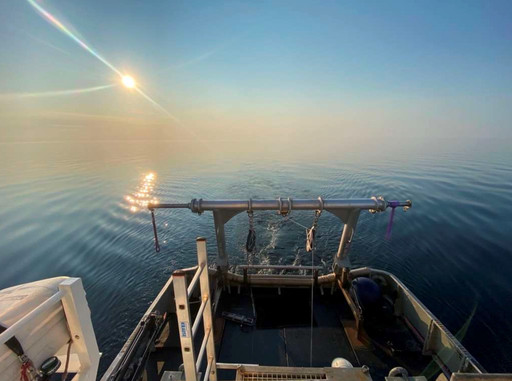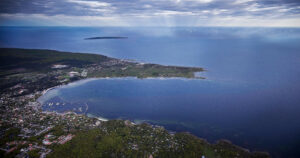Cutting-Edge Seabed Exploration for Aurum’s Success

During late summer, thorough investigations of the seabed off Robertsfors have been conducted. Clinton Marine Survey, on behalf of Eolus, is examining the conditions for our planned offshore wind farm, Aurum.
Måns Larsson is one of the project managers at Eolus, and he explains that the investigations are carried out using advanced sonar technology, which involves sending out sound waves that reflect off the seabed, providing information about depth and materials.
Why are these seabed investigations being conducted so early in the project?
– It’s part of mapping the seabed conditions so that we have as much information as possible at an early stage. This is a more detailed seabed survey than what is actually required, and we’re doing it to ensure that the seabed conditions are favorable both for construction and for obtaining a comprehensive understanding of the natural values present, which we naturally want to protect.
Could these investigations harm the seabed or the animals and plants living there?
– These types of investigations never disturb the seabed, so the impact on the flora and fauna is minimal, says Måns Larsson.
What kind of information are we hoping to obtain?
– In a project like this, you want to know as much as possible. We’re mapping everything that’s there and hoping to find a “boring seabed” with low natural and cultural values. During these investigations, it’s possible to discover things like shipwrecks or previously unknown natural values, and finding them at this early stage makes it easier to avoid them in the planning process. In Aurum, the project area is so large that there are ample opportunities to adjust possible turbine positions to protect any discoveries. The information we collect goes through a marine archaeological study, where experts, in collaboration with the county administrative board, analyze our data for potential marine archaeological values.
Philip Ljungström is the project director at Clinton Marine Survey, and he mentions that the team has enjoyed the beauty of the area during their work.
– One of the boats is small enough to dock in Ratan, which is incredibly beautiful. The other has been able to enter Holmsund, and when the weather was too rough for conducting surveys, the team enjoyed long runs in the area.
How have the investigations been so far?
– It’s an exciting seabed with many steep contours, which keeps the team on their toes, he says.
Philip Ljungström also shares that Clinton Marine Survey is committed to environmentally friendly practices.
– As Sweden’s largest marine surveying company, we invest heavily in climate and sustainability. We believe it’s good for our employees, all animals and nature, the sea where we operate, and for those who live around our operational areas. We do everything we can to be pioneers in the world in this area and were named a Top 10 Ocean Tech company in Europe in 2022 for our unique setup.
What makes your setup special?
– We work with smart solutions that allow us to conduct marine surveys with much smaller vessels than traditional methods. Smaller vessels emit fewer emissions – more than 85 percent less than traditional marine surveying vessels for the same type of missions – and require fewer personnel, which is both safer and more environmentally friendly during shift changes and more. In recent years, Clinton has invested in new Swedish Volvo Penta engines, likely with the world’s lowest emissions, on all our vessels where operations occur around the clock. These engines also enable us to use synthetic fuels, making it possible to conduct completely carbon-neutral marine surveying projects, says Philip Ljungström.



